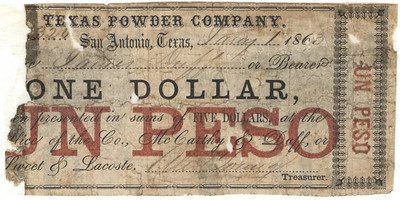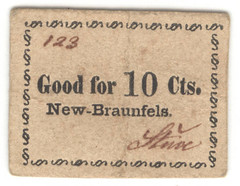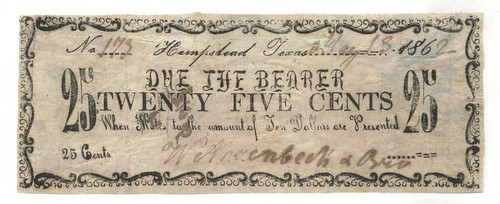
PREV ARTICLE
NEXT ARTICLE
FULL ISSUE
PREV FULL ISSUE
THE ROWE-BARR COLLECTION OF TEXAS CURRENCYThis webpage discusses the Rowe-Barr Collection of Texas Currency at the DeGolyer Library of Southern Methodist University. Found via News & Notes from the Society of Paper Money Collectors (Volume VIII, Number 41, March 28, 2023). -Editor Overview The Rowe-Barr Collection of Texas Currency at the DeGolyer Library is the most comprehensive in the United States, representing thousands of notes, scrip, bonds, and other financial obligations, issued in Texas between the 1820s and 1935. Holdings and Highlights
The Rowe-Barr currency collection offers an interesting avenue of access to life in Texas from the early days of its independence from Mexico through the years of the Great Depression. Issued by more than 100 counties, as well as banks, merchants, and private individuals, these notes were most often redeemable for cash, but sometimes for land or shares of stock.
About the Currency Collection Known to collectors as "obsolete" notes, the Rowe-Barr Collection of Texas Currency is useful in a variety of ways for historical research. Many of the currency notes are unique, and help to identify the issuing organizations that would otherwise be lost to history. By studying how notes were used, both within Texas and in exchange with merchants and governments elsewhere, scholars can learn much about the true basis and workings of the Texas economy. In addition, currency notes are often beautiful objects in themselves and can be studied as examples of the art of engraving and printing. The imagery associated with the notes -- from classical goddesses to bison to railroads to cotton bolls -- tells us something about the culture and its aspirations and ideals.
To read the complete article, see:
Wayne Homren, Editor The Numismatic Bibliomania Society is a non-profit organization promoting numismatic literature. See our web site at coinbooks.org. To submit items for publication in The E-Sylum, write to the Editor at this address: whomren@gmail.com To subscribe go to: https://my.binhost.com/lists/listinfo/esylum All Rights Reserved. NBS Home Page Contact the NBS webmaster 
|




